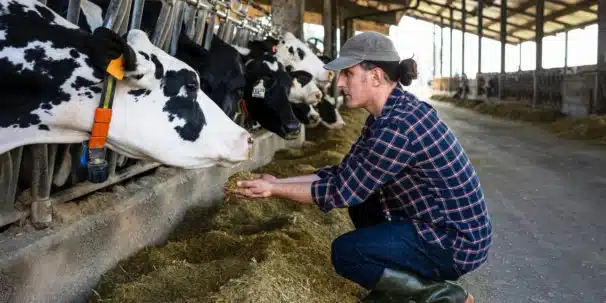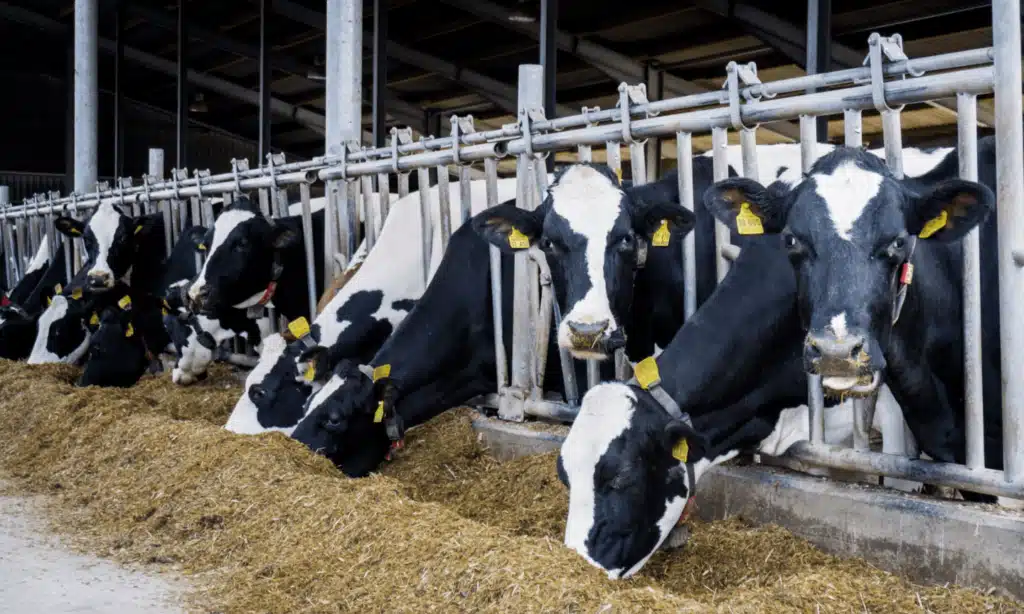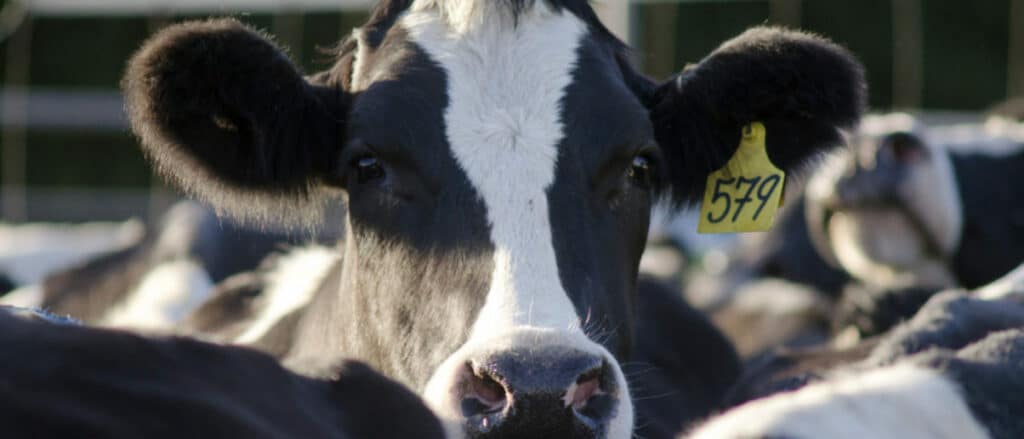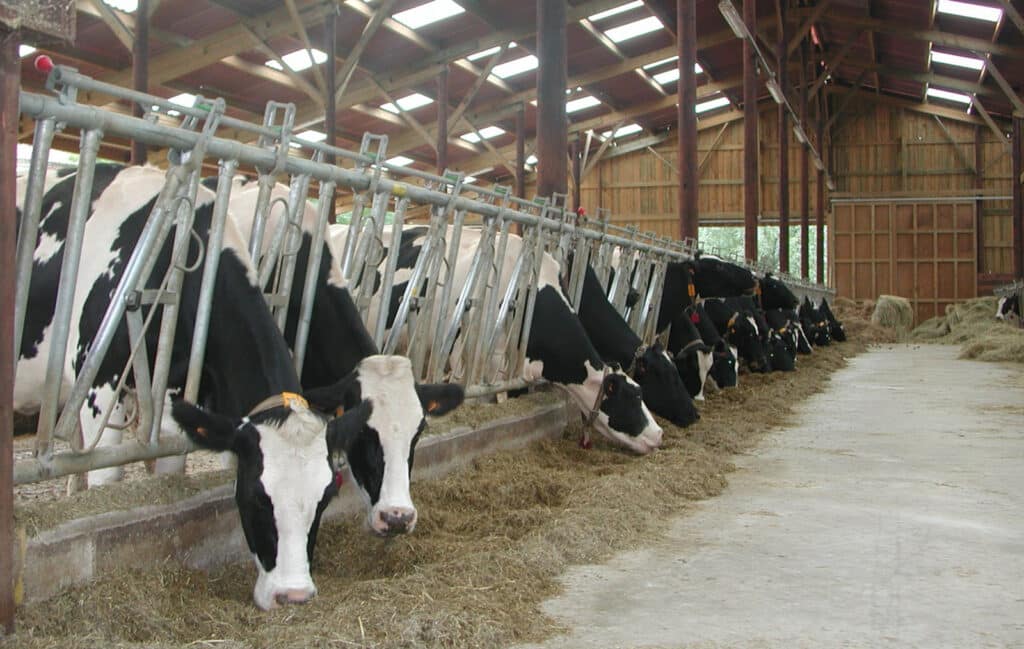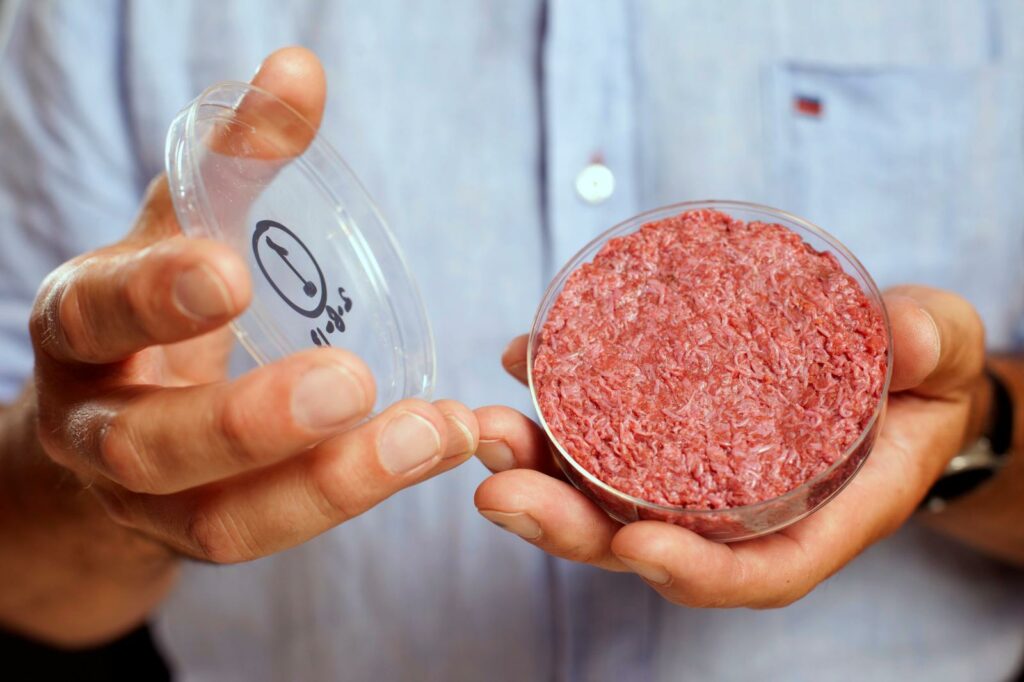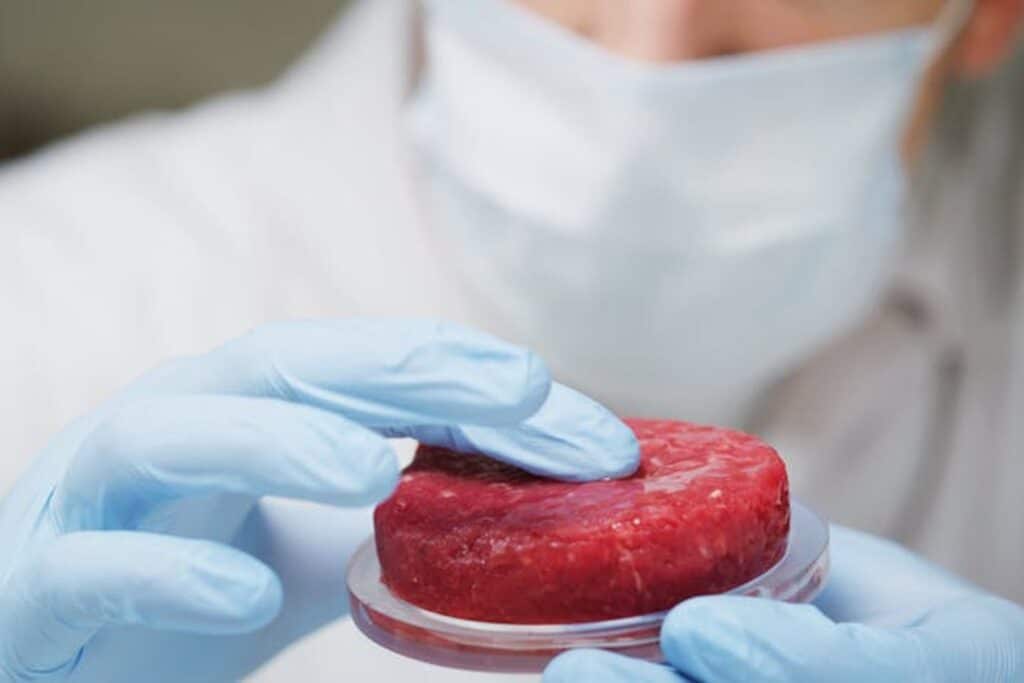Could Cultivated Meat Aid Our Climate Change Issue? Why The New Industry Has Experts Saying ‘Holy Cow’
By Ginny Dorn
We’ve long known that meat production is one of the worst industries for our environment, and the evidence continues to stack against it. According to the U.N. Food and Agriculture Organization, 5.8% of the annual global greenhouse gas emissions are directly caused by livestock raised for food. When you add in the impact of producing feed for the livestock, plus processing and transportation, that number jumps up to 14.5%. That’s almost 15% of the world’s greenhouse gas emissions, simply so that people can eat meat at every meal. (Baker, 2021) Meat alternatives, like the Beyond Burger, are great alternatives that have a much smaller footprint, yet they aren’t replacing the meat industry any time soon, as many people are turned off by the idea of “fake” or “mystery” meat. Could Cultivated Meat Aid Our Climate Change Issue?
Enter science. Companies from around the world have been working for years to create meat from tiny biopsies taken from the muscle of live animals, and they’re getting closer than ever to a completed product. It has many names: lab-grown, cell-cultured, cell-based, slaughter-free, cultivated, clean, and synthetic. Whatever you call it, the result of this work is real meat, grown in a lab from a sample of an animal that didn’t have to be slaughtered for the end result. Perhaps the best part is the potential for these products to positively impact climate change by completely changing the way we produce meat.
How Meat Impacts the Climate
It’s not news that producing meat is damaging for the planet. The biggest reason meat is seen as bad for the environment is because of cows. Cows emit methane as they digest their feed, mostly through belching, and then release nitrous oxide via their manure, both of which are greenhouse gases. Methane is 25 times more potent than carbon monoxide over a 100-year period, while nitrous oxide is 298 times more potent. (Baker, 2021) Since producing meat from start to finish accounts for close to 15% of global greenhouse gas emissions, lessening our demand for meat could have a huge impact on the climate.
Then there are issues with deforestation, as tropical forests are continuously cut down to make room for new pastures. These forests are not only important for the animals that live in them and the biodiversity they provide, but also for drawing down carbon from the atmosphere. In fact, a 2019 study found that about a sixth of the carbon footprint of the average diet in the European Union can be attributed to deforestation emissions – deforestation that is driven by agriculture, mostly beef and oilseeds.
Beef isn’t the only meat product that’s damaging the planet
While some have suggested choosing chicken over beef as a way to lower your impact, a new 2021 study reported that eating chicken or fish – those meats deemed as “less carbon polluting” – is not necessarily a sustainable replacement for beef. The study examined data on meat consumption between 1961 and 2013. During this period, chicken consumption grew five times per capita, while beef consumption remained relatively the same. The results showed that increases in the production of fish and chicken didn’t suppress or compete with other meat consumption. People were simply eating more of these meats in addition to beef. While the production of beef creates four to eight times the emissions of chicken, eggs, and pork per gram of protein, these alternative proteins are still much more damaging than a plant-based diet. For example, greenhouse gas emissions for a serving of poultry are 11 times higher than for one serving of beans.
Despite the fact that people are showing interest in plant-based meats and surveys show that people are interested in eating more plants, meat consumption is still on the rise. According to the World Resources Institute (WRI), global demand for meat is expected to double by 2050, in part because developing nations are experiencing booming economies, which means the poor are entering the meat-eating middle class. (Baker, 2021)
Meanwhile, researchers and officials are calling for people to eat less meat. The U.N.’s International Panel on Climate Change released a special report in 2019 which called for a reduction in meat consumption worldwide. The issue is complex – meat is an important source of nutrients and income in many developing countries. Eating meat is also cultural and sometimes spiritual. For people who are finally entering the middle class and have more access to meat, it feels like a right of passage. But for the majority of people and the majority of meals, meat is simply eaten because it’s convenient and cheap. These meals are exactly where cultivated meat companies hope to encourage change.
Lab-Grown Meat Could Have a Huge Impact on Climate Change
A 2021 opinion poll on climate change released by the U.N. found that while almost two-thirds of the 1.2 million respondents in 50 different countries believe that climate change is a global emergency – yet very few thought that plant-based diets were the solution. People simply don’t want to give up the convenience and flavor of meat – something that has been the norm in our diets since hunter-gatherer days. According to the WRI, if high-consuming nations reduced beef intake by 1.5 hamburgers per week per person, we could significantly impact climate change. (Baker, 2021) Unfortunately, denying pleasure has shown to be an ineffective way of driving change. The human body is designed to crave nutrient-dense calories like those that we get from meat.
Rather than asking people to completely change their diets, lab-grown meat offers an identical alternative that could save both the environmental and moral consequences of the large-scale factory farming that we use today. Mark Post, the co-founder of Mosa Meat, says that a half-gram biopsy of cow muscle could create up to 4.4 billion pounds of beef. To put that into perspective, that’s more than the entire country of Mexico consumes each year – a huge amount of meat that we could make by raising a single cow, with no need to slaughter it. Unfortunately, this level of production is still a long way down the line. To reach this goal, one biopsy would need to double 50 times, and Mosa Meat’s team has only made it to the mid-20s, so far. (Baker, 2021)
Mosa Meat
Currently, Mosa Meat is able to make 15,000 pounds (about 80,000 hamburgers) per biopsy – enough to supply 10% of the Netherlands’ yearly beef consumption, where Mosa Meat is located. Post also notes that eventually, they’d only need a maximum of 40,000 cows worldwide to cover global meat demand – compare this to the 300 million that we slaughter every year, and you start to see the huge impact that lab-grown meat can have. For now, Mosa Meat is focused on creating cultivated ground beef, which accounts for half the U.S. retail beef market – most of which comes from industrial factory farming, which is the worst for our environment. (Baker, 2021) When Mosa Meat has finalized its product and earned regulatory approval, it could completely change the meat industry.
How Lab-Grown Meat Works
Cultivated or lab-grown meat is made through what is called cellular agriculture, and the technology behind it is actually somewhat old. It’s been used in the pharmaceutical industry for years to manufacture insulin from the pancreases of pigs. In short, scientists first isolate stem cells in a biopsy, then create the desired tissue from the stem cells before feeding them a cell culture medium (made of sugars, salts, lipids, amino acids, and growth factors) and encouraging them to proliferate or multiply. The growth medium previously used by most cultivated meat companies was a cell culture from fetal bovine serum (FBS). Since cultivated meat is, at its essence, meant to be slaughter-free meat, they had to come up with an alternative. (Baker, 2021) Now, cultivated meat companies use a plant-based FBS that is both more ethical and more affordable.
To put this information into a real-life example, we can look at Mosa Meat. They have different teams that manage different aspects of the end product – there’s a Fat Team, Muscle team, Scale Team, and (stem cell) Isolation Team. Each team grows their various aspect of the meat from their own biopsies, carefully handling the cells and keeping them as comfortable as possible. The fat team feeds its cells a nutrient-dense growth medium which causes them to thicken into fat filaments. Eventually, these filaments mature and can be blended with muscle cells which are cultivated separately, ultimately creating a product that is, down to a cellular level, ground beef. (Baker, 2021)
Will People Buy Into Lab-Grown Meat?
While plant-based meat companies like Beyond and Impossible have proven that there is excessive demand for meat alternatives, cellular agriculture offers something for people who turn their noses up at plant-protein dupes. Eating lab-grown meat will be essentially the same as eating regular meat today – the flavor and texture are the same because it is genuine meat. McKinsey & Co, a consulting firm, reports that lab-grown meat could be a $25 billion industry by 2030 – potentially providing 0.5% of the meat supply globally. (Baker, 2021) However, we have plenty of social, economic, and technological issues to address before cultivated meat can completely replace regular meat.
Investors see cultivated meat as an opportunity and have already spent almost a billion dollars investing in cultivated meat companies in the last six years. With names like Leonardo DiCaprio, Warren Buffet, Bill Gates, and Richard Branson investing in the cellular agriculture industry, there’s a definite buzz around the financial returns that this budding industry can offer. Eat Just Inc., a food technology company that offers plant-based meat and has a separate sector working on cultivated meat, recently secured $97 billion in new funding, and already had an initial $170 million investment for its cultivated meat sector. It’s also recently announced a partnership with the government of Qatar, with plans to build a cultivated meat facility outside of Israel – the first of its kind. (Baker, 2021)
Cultivated meat could potentially have similar positive impacts on climate change
Still, private investments can only go so far. Cultivated meat could potentially have similar positive impacts on climate change as wind energy, electric vehicles, and other renewable energy technologies. The difference is that these renewables have government policies to back them up with funding, and cultivated meat does not. To drive real, large-scale change, we’d need the same government support.
Why Isn’t Cultivated Meat On the Market Now?
In short, most cultivated meat isn’t ready to be sold to the masses. Companies are either finalizing their product or are pending regulatory approval. However, some companies are leading the curve and are already getting support from the public. GOOD Meat, the cultivated meat division of Eat Just Inc., received regulatory approval to sell its chicken product in December of 2020 in Singapore – the first cultivated meat to be sold for consumption in the world. This was quickly followed by SuperMeat, an Israeli startup, opening a cell-based chicken tasting restaurant in Israel.
Few people from the rest of the world have gotten the chance to try cultivated meat, and many would likely shy away from it as the price is still quite high. It currently costs about $50 to produce one pound of cultivated meat. Three chicken nuggets from Eat Just cost $17, which is ten times as much as it would cost to get those nuggets at Mcdonald’s. Despite the many investors, lab-grown meat isn’t yet profitable enough to replace conventional meat. No one is growing the meat to scale yet, where it could effectively replace conventional meat. Companies must get the cost per pound of lab-grown meat down to below their conventional counterparts. (Baker, 2021)
Overcome the challenges
Experts say that each facility would need to produce more than 10 million pounds per year, which would require 100,000-liter bioreactors – GOOD Meat is currently only using 5,000-liters bioreactors at most. 100,000-liter bioreactors don’t even exist yet. It may take up to five years to create vessels that big, as it would be an engineering challenge. Even when they do manage to get the equipment big enough to produce lab-grown meat on a mass scale, we will likely run into issues with cellular biology. Mammalian cells don’t allow for perpetual cell division – they grow and excrete waste. As they do, viscosity increases, which stops biologists from getting enough oxygen into the cells, and the cells essentially suffocate. This is a problem that could be solved with genetic modification, but the leaders of cultivated meat and the general public reject this as an option.
Despite these issues, the leaders of the cultivated meat industry seem confident that they will overcome these challenges. Finless Foods cultivated bluefin tuna may be the first on the market in the U.S. It’s currently going through the regulatory process and is “close to perfect” – they’re just working on perfecting the texture. They hope to have both the texture and regulations process completed by early 2022 at the latest. We will likely continue to see luxury products, like bluefin tuna, from the cultivated meat industry. (Baker, 2021) These products would have the morals and ethics of the ethical foods on the market, but with more competitive taste, nutrition, price, and availability to draw in a larger crowd than just the folks who are already buying ethical today.
Where Do We Go From Here?
Ultimately, factory-farmed meat brings with it an increased risk of zoonotic disease spread, ethical labor issues, and concerns over animal welfare. Companies like Mosa Meat and GOOD Meat are aiming to replace the meat that people eat because it’s convenient and cheap, like the meat we get from factory farms. Meat isn’t going away for good – there will always be people who are happy to pay a higher ticket price for ethically sourced meat from live animals. The farms where the muscle biopsies come from could potentially offer both lab-grown meat and real meat. For example, the cows that Mosa Meat uses are pasture-fed and rotated through orchards, which is a form of regenerative agriculture. These environmentally friendly practices are what take place on many ethical meat farms, and would also be impossible to administer in large-scale farming. In this way, we could give cattle a good life, create mass quantities of meat from painless muscle biopsies from a small number of cows, and also eventually sell their meat to people who want to purchase more expensive, but much more ethical, conventional meat.
The companies currently producing lab-grown meat are waiting on regulations to sell in more markets. Meanwhile, the cattle industry is fighting and will continue to fight lab-grown meat every step of the way, as they stand to lose their $386 billion dollar business. Their jobs and investments are on the line. The cattle industry recognizes that the fight must occur now, before the cultivated meat reaches public consumption at grocery stores and restaurants. Once it reaches that level, they’ll be forced to compete on taste and price, where they might lose. If they fight now, during the regulations process, they’re more likely to win. A decision is currently pending on the U.S. Cattlemen’s Association’s petition of the U.S. Department of Agriculture, wherein they asked to limit the use of “meat” and “beef” exclusively to products that have been harvested from an animal in a traditional manner. (Baker, 2021)
If they win, it could make widespread adoption of cultivated meat much more difficult. People are naturally suspicious of new products that they don’t yet know or trust, so being unable to label cultivated meat as meat would likely impede the public from buying in.
Regardless of what we call it, it is meat, all the way down to a genetic level. The more that we promote the benefits of switching to cultivated meat and emphasize that it is real meat, the more we can increase buy-in from everyone – even the skeptics. If we do this, the better chance we have at dramatically lowering our global footprint on climate change.
Reference:
Baker, A. (2021, April). The Cow That Might Feed The Planet. Climate Is Everything, 75–81.
Denny, E. (2021, April 30). Chicken or beef? both contribute to climate change, new study finds. EcoWatch. Retrieved November 24, 2021, from https://www.ecowatch.com/beef-chicken-climate-change-impact-2652836402.html#toggle-gdpr.
Pendrill, F., Persson, U. M., Godar, J., Kastner, T., Moran, D., Schmidt, S., & Wood, R. (2019, May 20). Agricultural and forestry trade drives large share of tropical deforestation emissions. Global Environmental Change. Retrieved November 24, 2021, from https://www.sciencedirect.com/science/article/pii/S0959378018314365.
Learning Hub @GBRIonline provides you access to 100s of sustainability, green building and LEED courses.
To learn more about click here in link for our course on Could Cultivated Meat Aid Our Climate Change Issue? Why The New Industry Has Experts Saying ‘Holy Cow’

